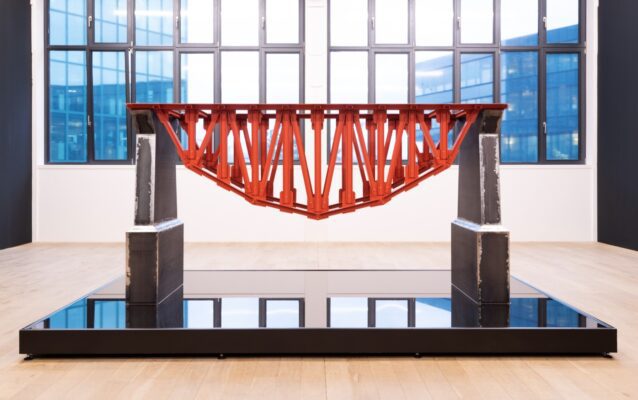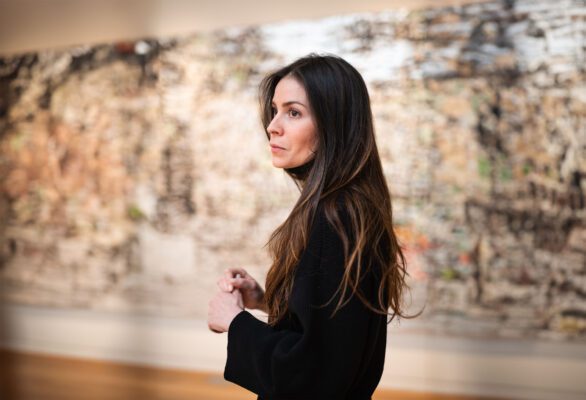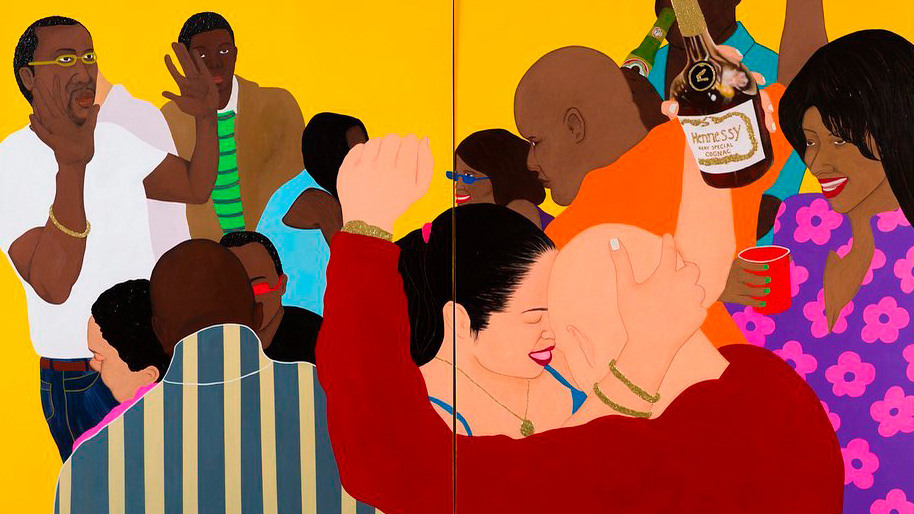
"Un coro en 3039 Wallace (De Lo Mio)", 2021.
COFFEE WITH
TIFFANY ALFONSECA: “MAKING STORIES FOR THE UNHEARD”
Name: Tiffany Alfonseca
Profession: Artist
Nationality: United States/Dominican Republic
Zodiac sign: Scorpio
Instagram: @tiffanyalfonseca
LATINNESS: Tiffany, we found your work through Instagram and immediately connected with the colors and witty titles. It’s a beautiful celebration of your personal experience as a Dominican-American, which makes me curious about what your upbringing was like growing up as a Latino in the Bronx, New York.
TIFFANY: I was born and raised in New York– Washington Heights and in the Bronx, as well. I was between both. My mom had Section Eight, so we would stay mostly in the Bronx and sleep in the Bronx. We really didn’t have a social life there. I feel like I couldn’t really relate that much. I don’t know why, but I didn’t feel welcomed in the Bronx. Most of my identity is from Washington Heights because I went to middle school here, and I made all my friends here. I’ve got a little bit of both boroughs in me in ways that have kind of molded what I am today because I took some of the culture from the Bronx and also from Washington Heights.
I’ve always been around environments where there are a lot of Dominicans or Puerto Ricans, a lot of Latinos around me all the time. In the Bronx, it was mostly a lot of Jamaicans. So, I observed a lot of different types of culture.
I went back to the Dominican Republic to visit my family every summer, or every year, since I was a little kid, which plays a big role in my art because I love the Dominican culture. It’s something I always wanted to see growing up, in art and in bigger spaces such as museums or galleries. I never saw that growing up, so I always wanted to incorporate that into my artwork.
Going back over there really inspired the work, especially seeing the Haitian street vendors and art vendors played a big role in my art, like those little moments and scenes always constantly replaying in my head. It’s super reminiscent in a way, and that’s how a lot of my work has come about.
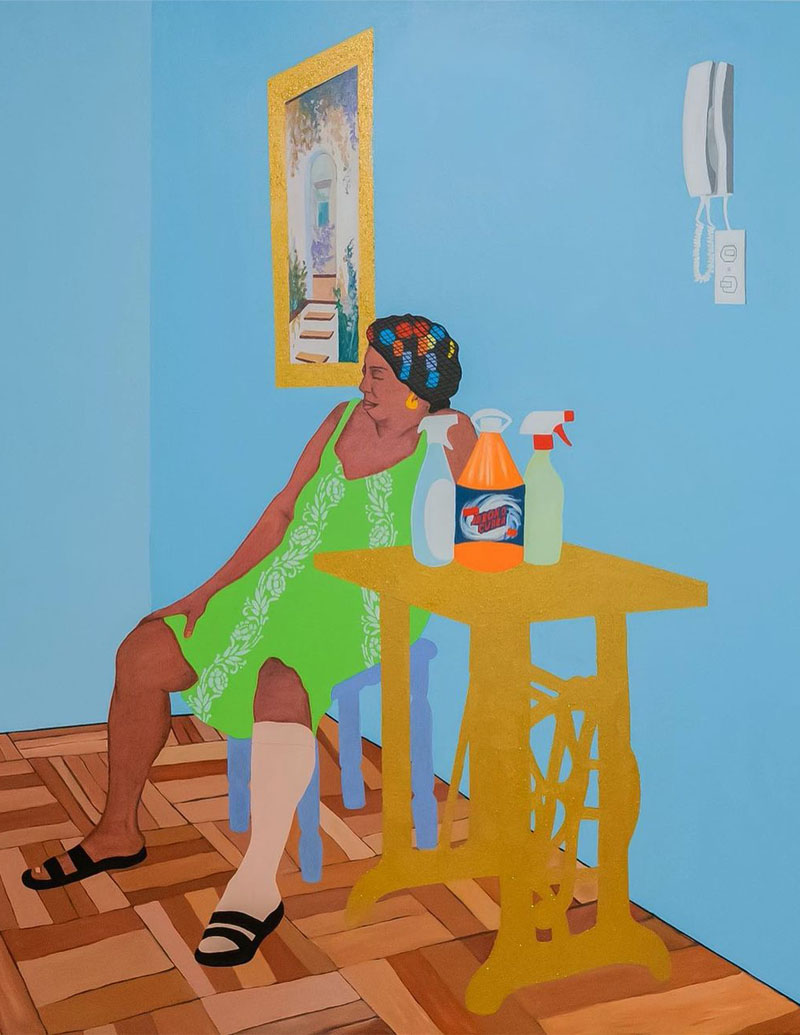
“Morena (More)”, 2022.
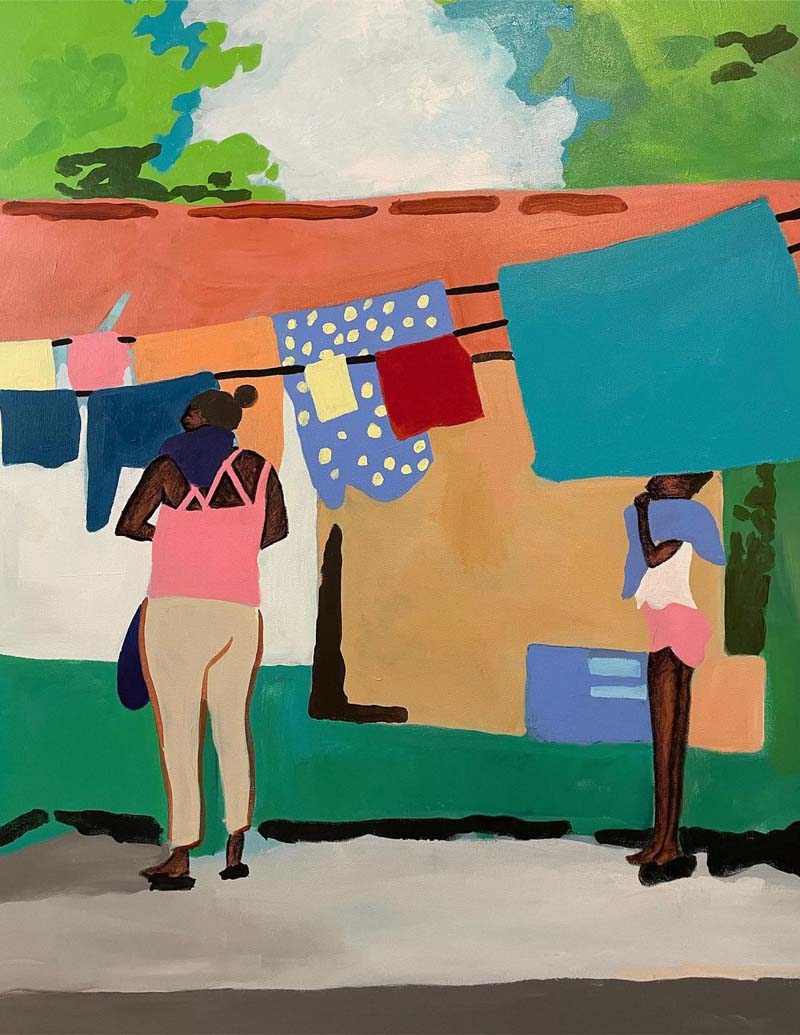
Close up of a work in progress (Enganchando ropa).
LATINNESS: It reminds me of the Latin saying “Ni de aquí ni de allá.” Does this resonate with you?
TIFFANY: Yeah, I totally relate to that. People here in the United States automatically say things like “you are Latino” or “you are Spanish”, but when I go back to DR, it’s like, “Oh my God, you’re so blanquita!” It’s super complicated where you don’t feel welcome there nor here.
I get away more with being accepted as a Latina here. Let’s be real– they’re going to look at me and not say “you’re white” just because I’m light-skinned, because you can hear my accent and see my features. Here they’re more woke about stuff like that, but when you go back to those countries (DR, Puerto Rico, wherever it is that any of us are from) they’re kind of confused about everything. So I really don’t know where I belong. I’m just living at this point.
LATINNESS: Is there a strong sense of community in Washington Heights?
TIFFANY: There’s a very strong sense of community here, especially the Dominican community, because so many people from DR migrated to Washington Heights or the Bronx.
Now it’s so prominent– the Dominican community, heritage, everything in the Heights– that they even call Washington Heights “Little Dominican Republic.” You go down the block on 180th and it literally looks like DR with street vendors, the craziness, the music… It’s the same thing.
LATINNESS: What role has the community played in your journey of becoming an artist?
TIFFANY: It’s a big part of my work, especially the subjects that I paint or draw. For example, I use photo references. I do an open call sometimes on Instagram and ask people, “Do you want to be a part of this project?”
I’m bringing other people that I don’t even know into the practice, they tell me about their story, and we’re collaborating in that way. That’s how I like to bring the community into it, even with my family members. I work a lot with old family photos, or when I travel back, I take photos of family or the scene, and I incorporate that into my work, as well.
Now I’m trying to expand more with different types of nationalities, not only DR. I want to be more inclusive in that sense too.
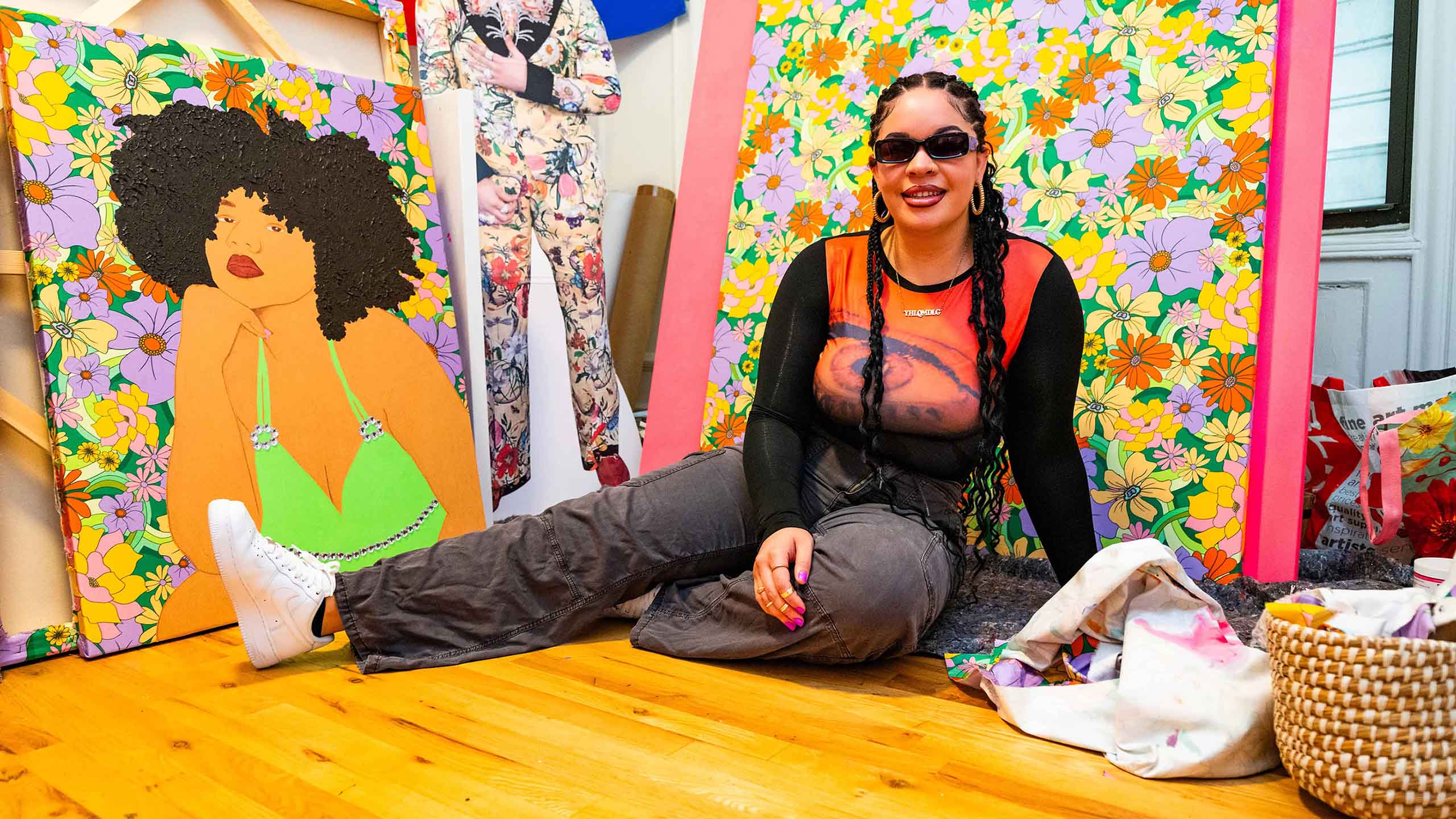
Tiffany´s self portrait.
LATINNESS: Particularly in Latin America, or just in general?
TIFFANY: Definitely Latin America and African American because that’s just what I’ve been brought up with the majority of my life. In school, I was with a lot of African American folks and a lot of Latinos, which has molded me in a way. With African Americans and Latinos, you know, we have a lot of similarities, we go through a lot of the same struggles, so it’s just opening up the dialogue more.
LATINNESS: What was your first memory with art?
TIFFANY: The first memory was probably in middle school. I have been into art since I was a baby, literally. I always had my notepad and crayons. My mom was always ready with that en la mochila. It was something I knew I loved.
When I was in middle school, I won an art contest, and I remember this was the biggest deal for me. They put my work in Columbia Presbyterian Hospital, which is a really big hospital in the Washington Heights area. They saw my work and put it in an exhibition there. I was in sixth grade and was like, “Wow, maybe I could really get into this somehow”. Then, I started to really focus more in high school, but that was when I got introduced to art.
LATINNESS: I read that your mom was really supportive of you following your dreams as an artist.
TIFFANY: Yeah, my mom definitely. She was super supportive of that. Anytime I wanted to do anything art-related, she already got the materials. I didn’t even have to ask her, she already knew and always supported and paid for those classes.
I remember in high school, the Fashion Institute of Technology College, I went there for like two years of high school, and I just started preparing basically for college there. What I wanted to do was Fine Arts, so I would take those Saturday classes, but that was because of my mom. She found all of that for me. Her and my sister were not playing. They were like, “You’re going to do this, and we support you”. I got lucky in that aspect for sure.
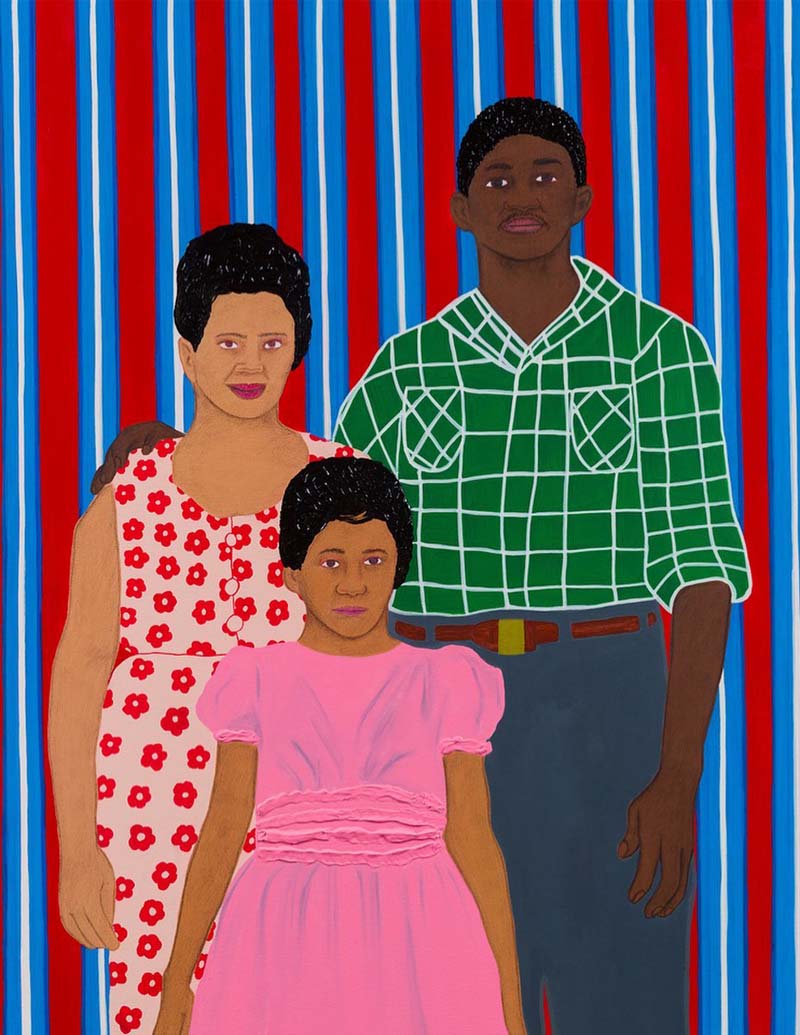
"Alfonseca's", 2021.
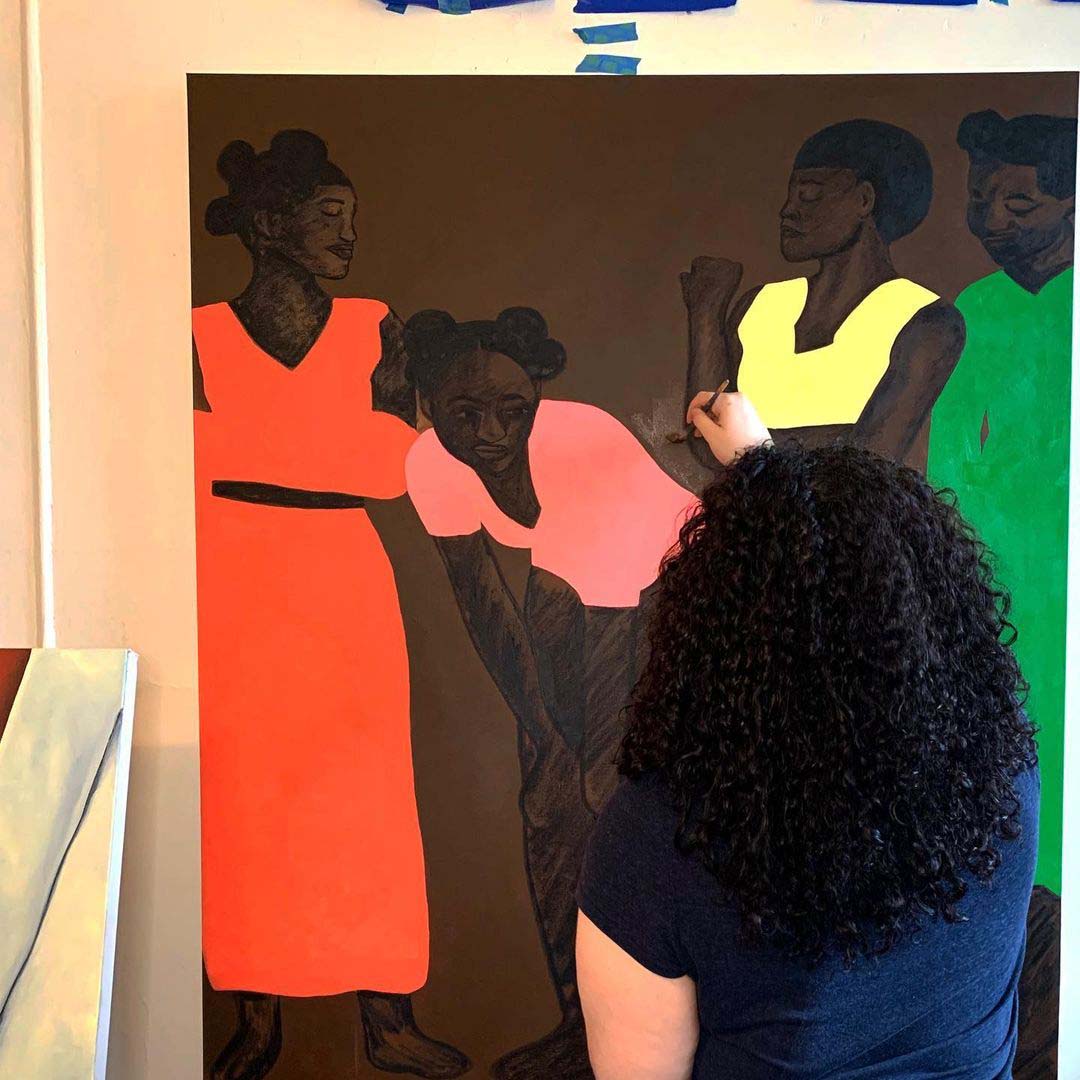
Portrait of Tiffany painting.
LATINNESS: You have a penchant for portraits. What influenced this?
TIFFANY: It’s so funny because in the beginning, I used to do a lot of still lifes, I used to hate doing portraits. I didn’t even know how to paint people, but I knew how to paint still life, landscapes…
It started because I used to watch a lot of Bob Ross, and I just really became in love with that type of art. It’s always been ingrained in me that that’s the bougie, fancy art, the art that’s going to get money. I don’t know why, when I was a kid, I would always see these big time artists, old masters, you know what I mean? That’s the style they would do, so I would always associate that with that.
I started taking a painting class at FIT when I was a freshman in college, and it was horrible. I couldn’t paint people, and I was like “Oh, I never want to do this”. I even stopped painting for a couple of years, and in that break from college, I started really finding my art style and just messing around with portraits. I would start with celebrities because I didn’t know who else to use. I didn’t have money to rent a model, so I would just look at celebrities and paint them like little studies.
As I started getting more into art and taking it more seriously, I would ask some of my friends to model or take photos of them, and then I would continue doing the Fine Arts classes where they have the live nude model. Then I just kept going because I really liked it. Once I graduated college, I started taking old vintage photos from my mom, photo albums and stuff like that. So I started painting family photos and it just kept going and growing from there.
LATINNESS: Do you remember when you sold your first painting?
TIFFANY: I think it was in 2019, my first painting that I wasn’t afraid to say the price. In 2019, I did a show at NYU about LatinX experiences. That show brought me a lot of exposure, and that’s how I sold my first painting. I was so thrilled, off the roof.
LATINNESS: It seems you flourished more outside of the classroom. With art, it’s kind of either you have it or you don’t… would you agree?
TIFFANY: Yeah, I just feel like I learned a lot from being in college, and it didn’t work out in a way. I learned a lot about why it didn’t work out. It kind of pushed me to want to do more, experiment more, and get out of that comfort zone of art college and weird art professors and stuff like that, that bring you down. Sometimes they don’t even want to help the student out.
I had really weird experiences in art college. I did it for the degree, but honestly, I did everything else on my own. I made most of my impressive work by focusing on my own vision, not listening to any professor. I just basically used the space because I didn’t have space at the moment, so I’m like, “I might as well use these studio spaces”.
I definitely figured it out on my own and always knew what I wanted to do. I wanted to have a better representation of the Dominican heritage and culture in the art world, especially emphasizing on Afro-Latinidad también because I feel like that hasn’t really been explored. It’s either, you’re African American or African or Latino. There’s nothing really in the middle.
Those are the things I think about, honestly, being more inclusive in the art world. Making stories for the unheard.
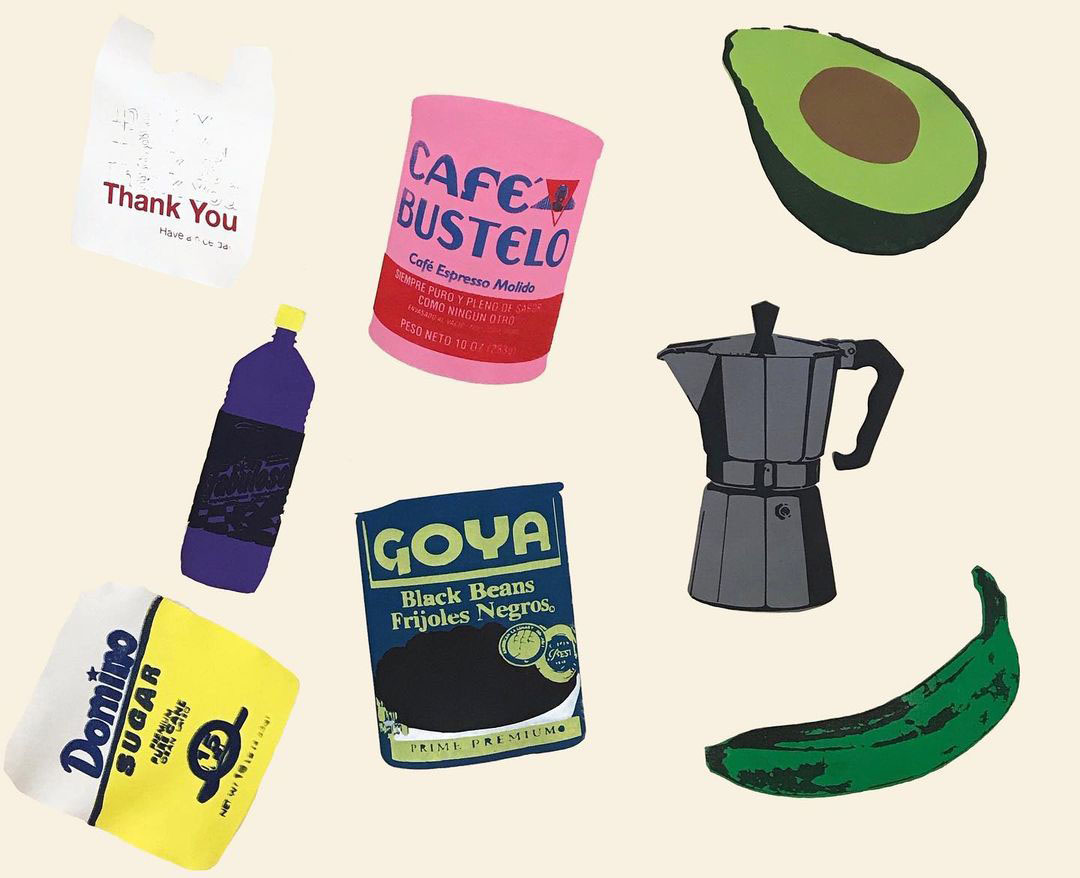
“En La Cocina”, 2017.
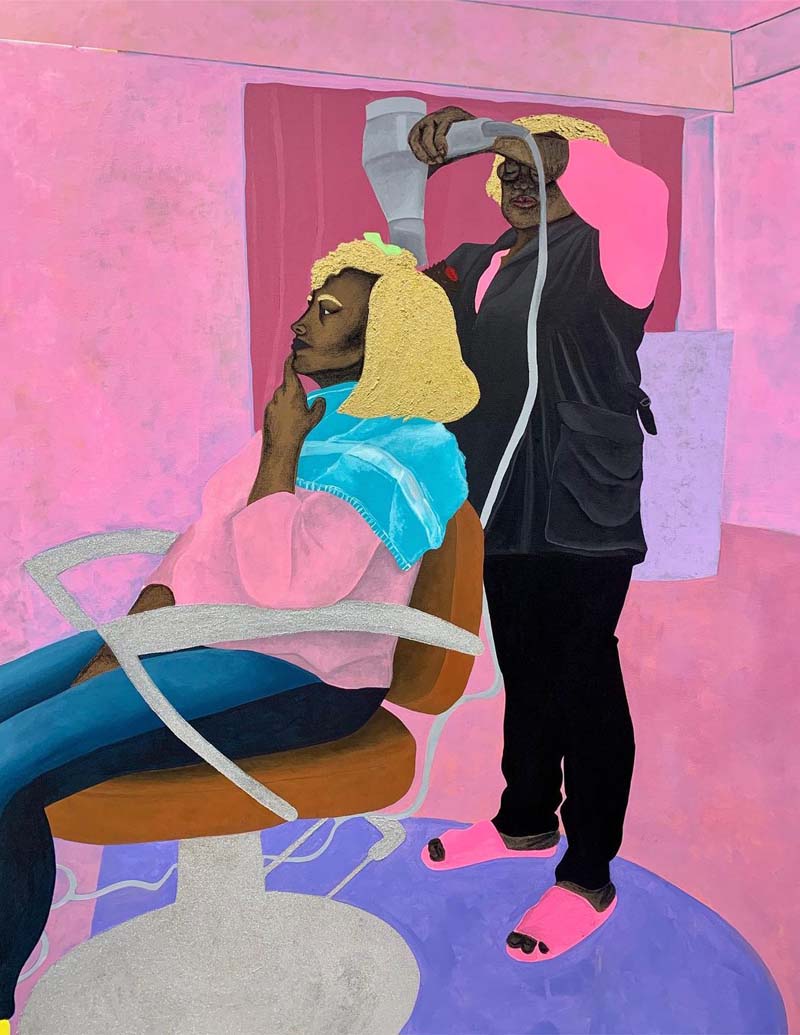
“Iglesia”, 2020.
LATINNESS: I love that. I think you’re doing it.
TIFFANY: Thank you. Also, this is something I really think about: always having Latinos depicted or African Americans depicted in a work setting. It’s something that we always see in art, like they’re doing labor or not having fun or just being beaten or something. If you look back in time, in the old masters, that’s how a lot of Latinos or Africans are depicted in the art world.
When you look at my work, it’s about highlighting them and having them in pretty environments. I just made a series of women, like floral, something different, instead of seeing our people in pain and suffering, it’s a highlight of us, basically.
LATINNESS: That’s what first spoke to me about your art– it’s joyful.
TIFFANY: Thank you. The color palette stems from going back to the art and seeing all those bright-colored houses and how my mom would set up the house. It was very bright turquoise paint, hot pinks.
My art is literally a reflection of me. It’s something that I bring, it’s my personal lived experience most times, or people that I interacted with. It’s memories, scenes that I saw going back or even here, I’ll capture these scenes. It’s a part of the experience for people like me that are not from here, not from there. I’m capturing that.
LATINNESS: Social media and the pandemic played a pivotal role in your career taking off.
TIFFANY: Yeah, for sure. I did a quarantine series, which was my thesis project for college. That was my last semester and I didn’t have any materials. I just started sketching. At the time, I had taken a really long break from sketching and was focused on painting, but I wanted to go back to my drawing roots, and it just blew up. It was so successful.
That’s when I started asking a lot of people from Instagram to participate in my projects because I wanted to see what they were doing or what their experience during the quarantine was, so we shared stories like that. I basically told them to capture themselves in a place that they found themselves frequently in during the pandemic.
It got a lot of love, and it was during a time where the Black Lives Matter protest was happening, and a lot of stuff was happening that year, and my art kind of made people relax. That’s why it blew up in a way because they found something relatable, like “We’re all going through this, and she’s really capturing it”.
That was a great year for me. Even though it was a horrible year for the whole world, it was a great career year for me.
I’ve made so many amazing connections since then. The pandemic made me close to a lot of people because that’s all we had, this is how we could communicate. FaceTime, Zoom, studio visits on zoom and stuff like that. You really got to connect with people at that time.
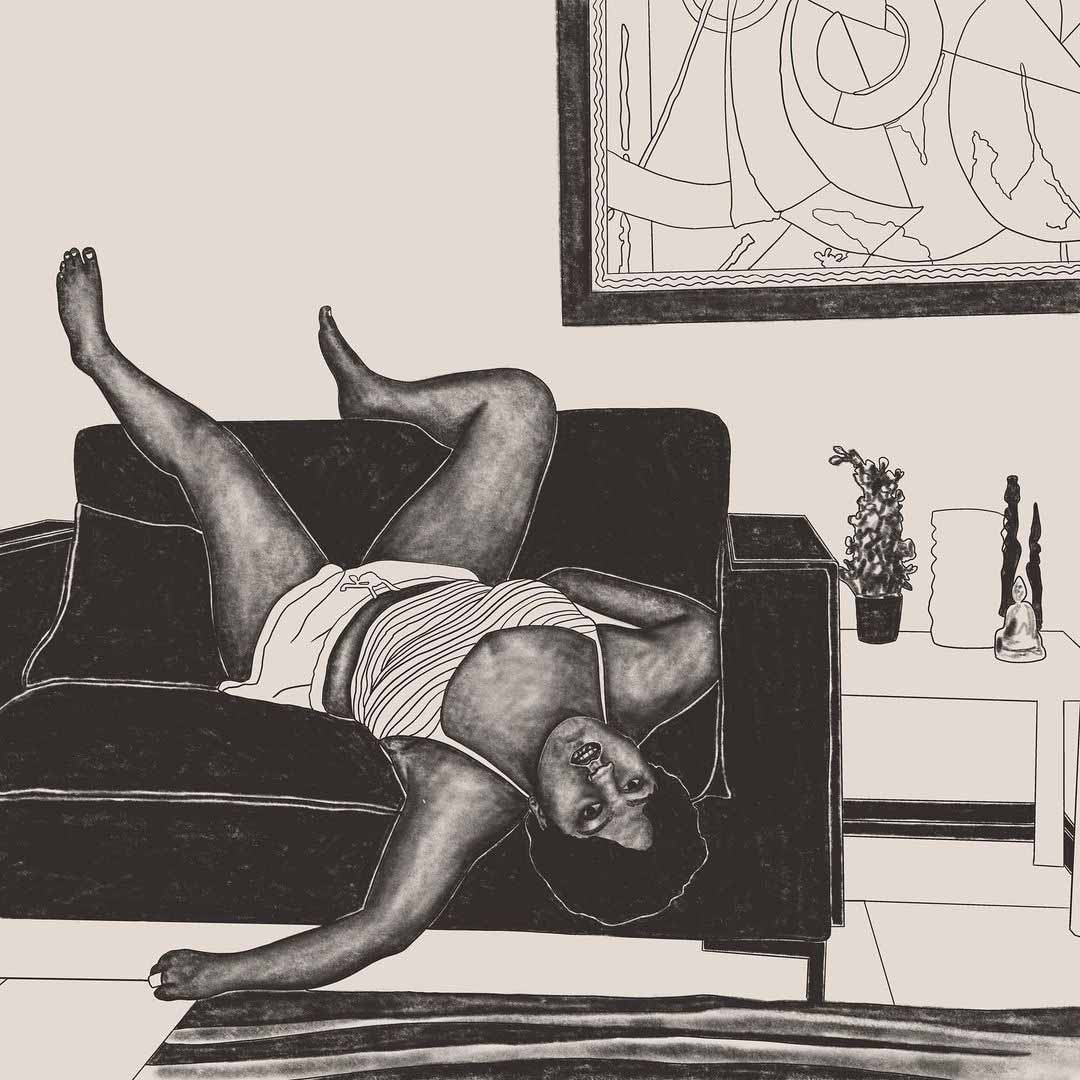
“Srishti Dass” (In Quarantine Series), 2020.
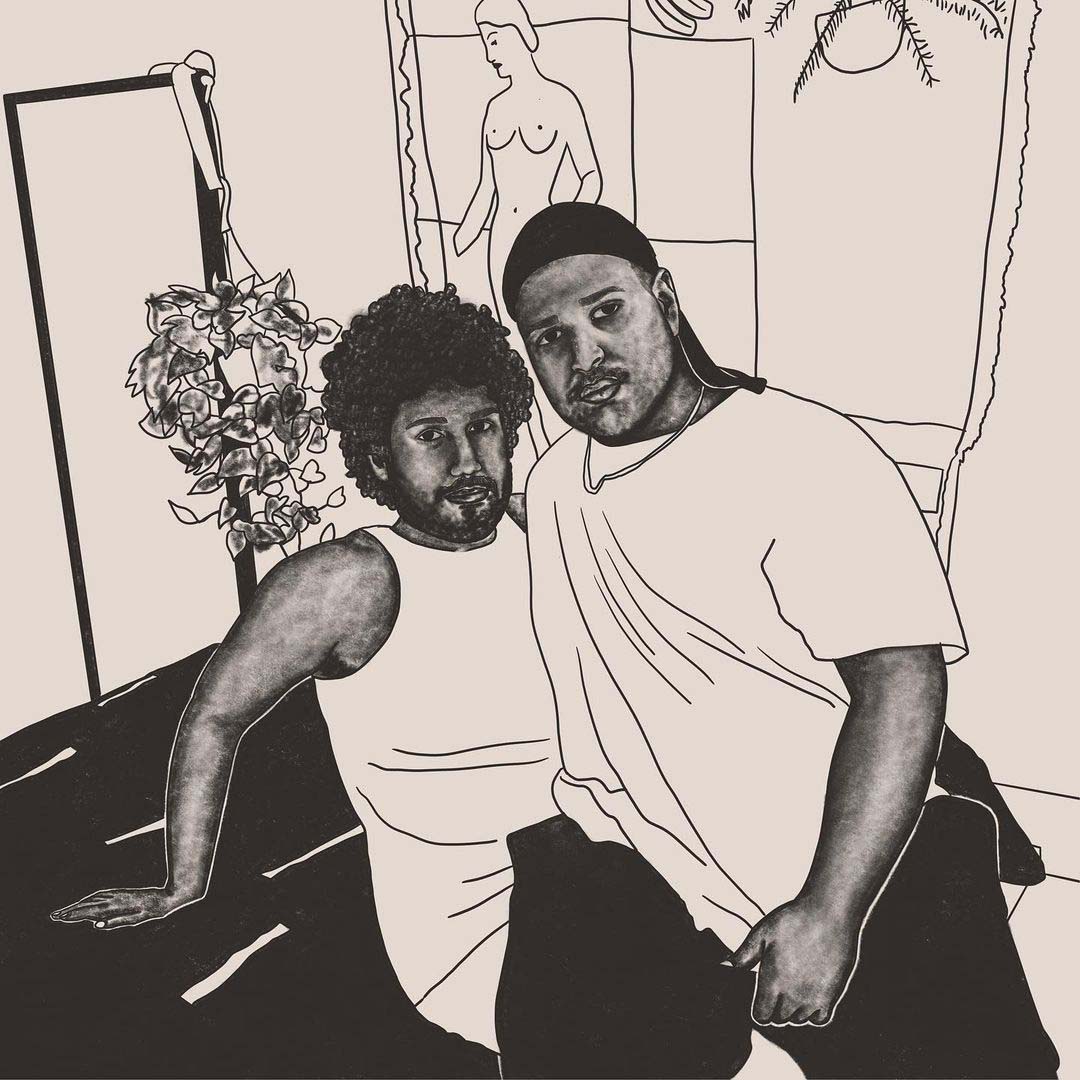
“Devin&Robbie” (In Quarantine Series), 2020.
LATINNESS: What are you working on now?
TIFFANY: I’m actually working on something similar to that right now. Not anything to do with Covid or quarantine, but like after it in a way. Asking the same people in the community if they want to be a part of it or family, just like what’s happening now in 2023, basically. Those are drawings I’m working on that I intend on making into tapestries, which is something I’ve been dying to dive into because I love fibers related to art.
I used to work in an embroidery lab. I went to the high school of fashion industries and majored in fashion design. Fashion, fabrics and fibers have always been an interest, and that’s something I really want to incorporate more into my work. I tend to use a lot of textures, and it’s because of that influence. I’m trying to work on this tapestry, but it’s kind of hard right now because I have no space to do it.
LATINNESS: So we love the use of Bustelo and everyday objects in your work. It reminds me a lot of Andy Warhol, who once said, “Many an afternoon at lunchtime, mom would open a can of Campbell’s for me because that’s all we could afford. I love it to this day.” Would you say these everyday objects bring you closer to home?
TIFFANY: Oh, yeah. For sure. It’s funny you bring up Andy Warhol because in college, I took a semester to do silkscreen. Andy Warhol is a huge influence in the silkscreen world, so that was obviously a really big influence.
I started doing stuff like that too, with habichuela, Goya and those products, so it played a role in my college experience. The experimenting phase, if you want to call it. I like that aspect of what he does because it resonates with a lot of people in the community too, that can’t afford anything but just a little can of beans, or Bustelo because that’s a staple we need for coffee all the time.
I definitely love to include that, and I want to do that more. Right now, my focus has been so much on portrait work that I kind of left out the lifestyle aspect, but that’s something I definitely want to start getting back into because it’s essential in the culture, as well. The food that we eat plays a big part in it. In the beginning, I used to put in more platanos, Presidente beer, it’s just little stuff like that that brings you a little closer to the culture too.
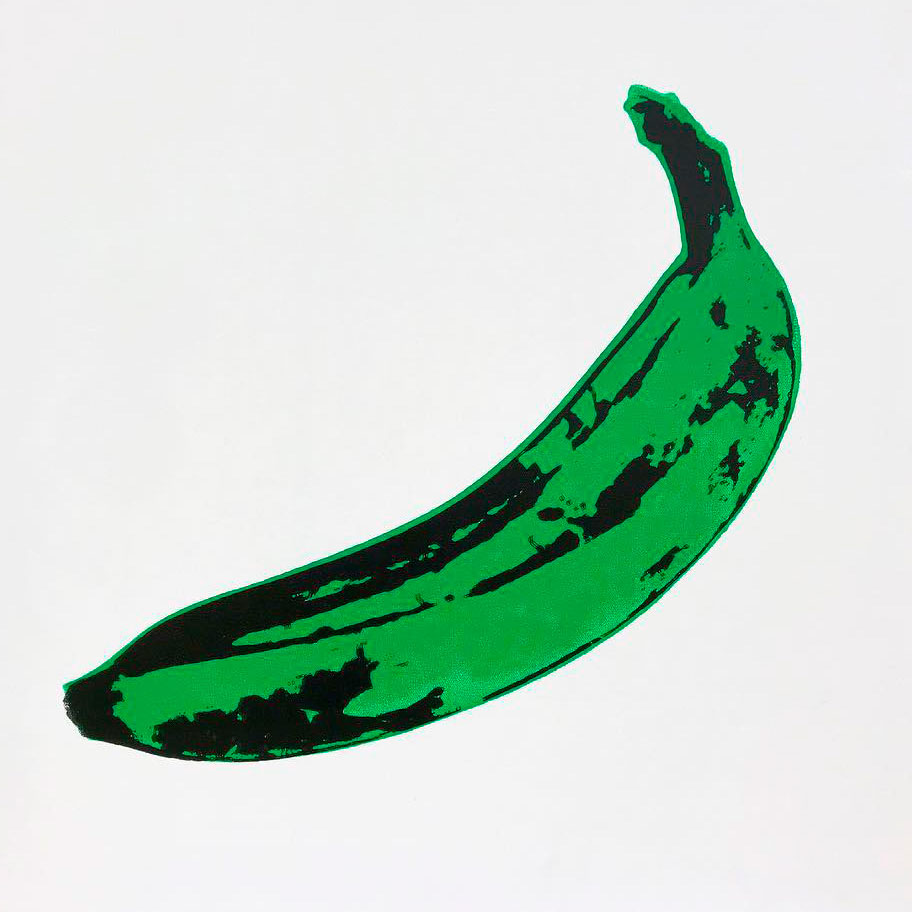
“Platano”, 2019.
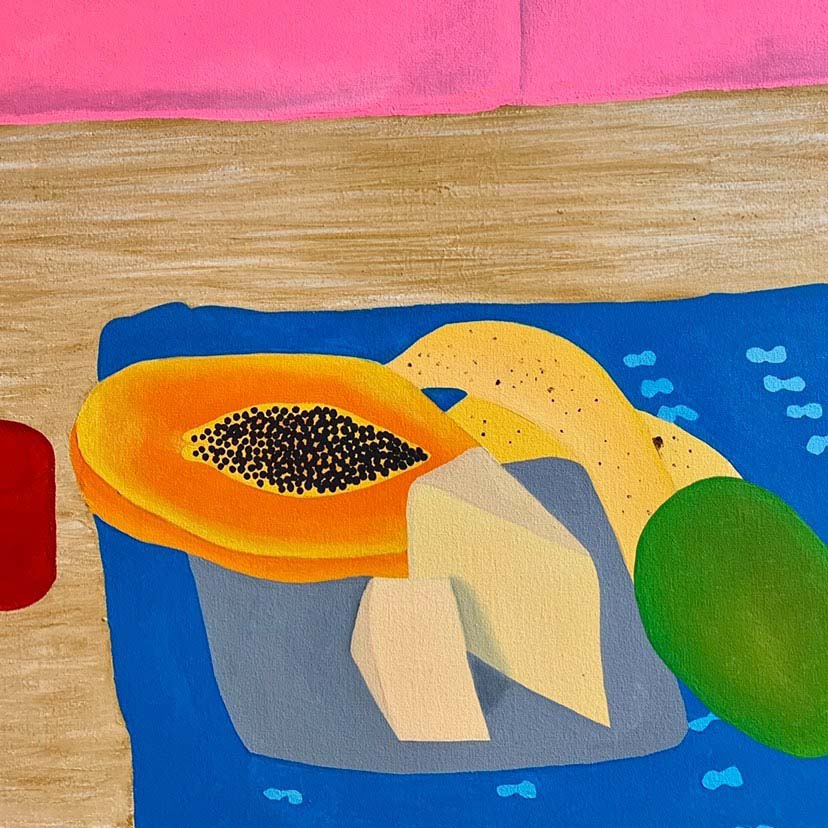
Detail "Natalie Matos", 2020.
LATINNESS: Do you have a dream project you want to accomplish as an artist?
TIFFANY: I have so many, but maybe public art. Maybe even something in the trains of New York City because a lot of people in New York rely on the train, the public transportation. I’d like to see my art in that light or on the mosaics, that’ll be super interesting and something I definitely want to do.

